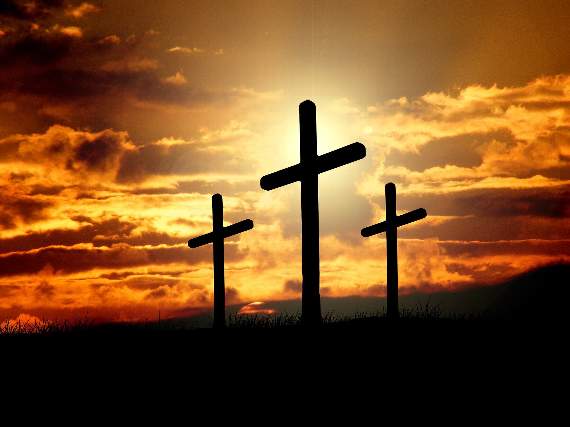We are about to celebrate Easter – but have you ever wondered why, unlike Christmas, the date of this festival marking Jesus Christ’s Resurrection moves from year to year rather than being static in the calendar? Well, blame the movements of the moon.
At this time in the 21st century when we are focused on the findings of Nasa’s Perseverance rover on Mars and the prospect of a Spaceport in Cornwall, it is astonishing to think that people of the Dark Ages were also debating movements of planets when determining when to celebrate the springtime festival of Easter.
Some historians believe the Christian festival we now call Easter has its origins in the pagan celebrations held in ancient times for Eostre, goddess of the spring, and who was believed to symbolise a spirit of renewal. These celebrations were held at the time of the Spring Equinox around March 21, when the hours of daylight equal the hours of darkness.
As the bringer of light after a long dark winter, the goddess was often depicted with the hare, an animal that represents the arrival of spring as well as fertility – and who over time became the Easter Bunny children now associate with our modern festival.
The ancient Eostre celebrations were adapted by the Christian church to represent the Bible’s account of Jesus’s death on the cross and then his resurrection three days later.
While the origins of our word Easter can be seen in the name Eostre, many European languages use words derived from the Latin name Pascha, derived from the Hebrew Pesach, meaning the Jewish Passover festival of the Jewish people being freed from slavery in Egypt.
The significance to Christianity of Passover was that Jesus’s crucifixion took place after he had come to Jerusalem to celebrate the festival with his disciples, so many early Christians took to celebrating Easter on the same date as Passover. However, complications developed when Christian churchmen decided Christ’s Resurrection should always be celebrated on a Sunday.
Full moon
In 325AD the Roman Emperor Constantine convened the Council of Nicaea and decided that Easter should always fall on the first Sunday after the first full moon following the vernal equinox. Easter thereafter remained without a fixed date but based on the date of the full moon coinciding with the start of Passover. However, that then meant lots of complicated calculations using lunar calendars and tables of the solar year – and over time there developed a difference between the date when British and Irish followers of ‘Celtic’ church traditions and followers of the ‘Roman’ church traditions celebrated Easter.
It was to settle this ‘Paschal Controversy’ in Anglo-Saxon England that in 664 the Synod of Whitby was held by King Oswiu of Northumbria. He reasoned that because St Peter, a disciple of Christ, had established his church in Rome, and because St Peter also held the keys to Heaven and so would hold the King to account, the Roman dating should be followed!
However, that was not the end of the matter in the British Isles, as the monks of Iona stubbornly held onto their timing of Easter until 716, and the Welsh held out even longer, until 777. But the most stubborn adherents of the Celtic dating of Easter of all were the Cornish, who were only persuaded to change to the Roman way of doing things by Bishop Aedwulf of Crediton in 909.
So what about other Easter traditions, such as Easter eggs? Well, once again planets are involved, as it is believed that the ancient Celts rolled decorated eggs downhill at their Beltane festival – held halfway between the spring equinox and summer solstice – in imitation of the movement of the sun. Christianity then remodelled this tradition to symbolise the rolling away of the stone in front of Christ’s tomb, and again adapted the theme of death and rebirth to symbolise Jesus’s Resurrection.
Chocolate
Dyeing eggs in different colours and rolling them downhill continued to be a tradition in Ireland until quite recent times – and eggs hatched on Good Friday were believed to produce particularly healthy birds, while those laid on the same day were marked with a cross and then eaten on Easter Sunday.
In time, the hare, or Easter Bunny, and the decorated eggs of ancient tradition were represented in the chocolate gifts that we exchange today. So however you celebrate Easter, remember then our modern custom is an extraordinary blend of cultural traditions.




